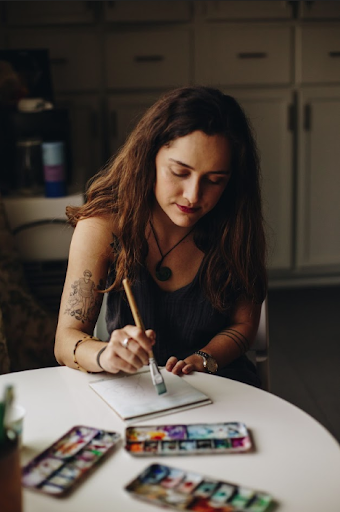Submissions
Take the time to read the Guidelines below. In submitting your work to Awa Wahine, you state that you agree to adhere to these guidelines.
-
We reserve the right to discern which articles are published on the blog, the magazine or in our pukapuka. If an edit is required, we will seek your approval before publishing.
Please let us know what your pronouns are.
We accept multiple submissions.
Submissions can be published elsewhere. We reserve the right to exclude links to personal blogs, etc., if in the interest of our readers.
Posts will be scheduled per our marketing strategies and not in order of received.
We do not allow threats of violence and incitement, hate speech or harassment. Awa Wahine is a safe space for our writers and readers alike. While we strive to empower people to voice their thoughts and feelings, we will not allow published works that use the above offensive terms. If an edit is required, we will seek your approval.
While we will never use your writing outside of Awa Wahine platforms as part of our marketing strategies to reach more readers without your permission, we may quote your words (and refer to you) and images for posters, social media and other marketing publications. In submitting your works, you agree to this use.
We will seek your approval for any opportunities Awa Wahine create for our contributors in terms of publication and opportunities.
-
Please submit pitches and submissions to ataria@awawahine.co.nz.
For blog submissions only, include a high-resolution (preferred) or download a free image from Unsplash.com or Pexels.com. Please provide appropriate copyrights. Just an idea: If you don’t have any photos, have some fun and do a photo shoot with a friend for your submission.
Submissions to Rima Magazine or the Papatūānuku Collection do not require an image.
-
Pitches for interview and article ideas, draft pieces, poetry, photo essays, artwork collections, and short stories for Waru | Issue 8 are open until midnight 31 August.
All contributors receive a complimentary copy of the magazine.
Writers selected for inclusion are paid the following fees for by invoice on the 20th of the following month.
Poetry – $50
Creative Writing – $100
Essays / Articles – $150
Please note: there are no fees paid for academic journal articles or republished pieces.
-
Submit your writings for the next pukapuka in the atua wāhine collection, focussing on Hine-nui-te-Pō. Any writing form is welcome, from short stories and personal essays to poetry.
Submissions have not yet opened.
You don’t need to be knowledgeable about Hine-nui-te-Pō; write from your own experiences of learning about, being inspired by or connecting with them. For an example, check out Papatūānuku or the Atua Wāhine Collection.
Writers selected for inclusion are paid the following fees by invoice on the 20th of the following month:
Poetry – $50-100
Creative Writing / Essays / Articles – $150
Please note:
There are no fees paid for academic journal articles or republished pieces.
Priority will be given to writers of Māori and Pacific descent.
An excerpt on Hine-nui-te-Pō from Mana Wahine and the Atua Wāhine and other readings below:
Further references:
Te Awa Atua, Te Awa Tapu, Te Awa Wahine: An examination of stories, ceremonies and practices regarding menstruation in the pre-colonial Māori world
Contact us
ataria@awawahine.co.nz
Find Awa Wahine
-
InnoNative
14 Quayside, Town Basin, Whangārei 0110 -
InnoNative
14 Quayside, Town Basin, Whangārei 0110Moana Fresh
64 Rosebank Road, Avondale,
Auckland 1026Unity Books Wellington
57 Willis Street
Wellington Central 6011



